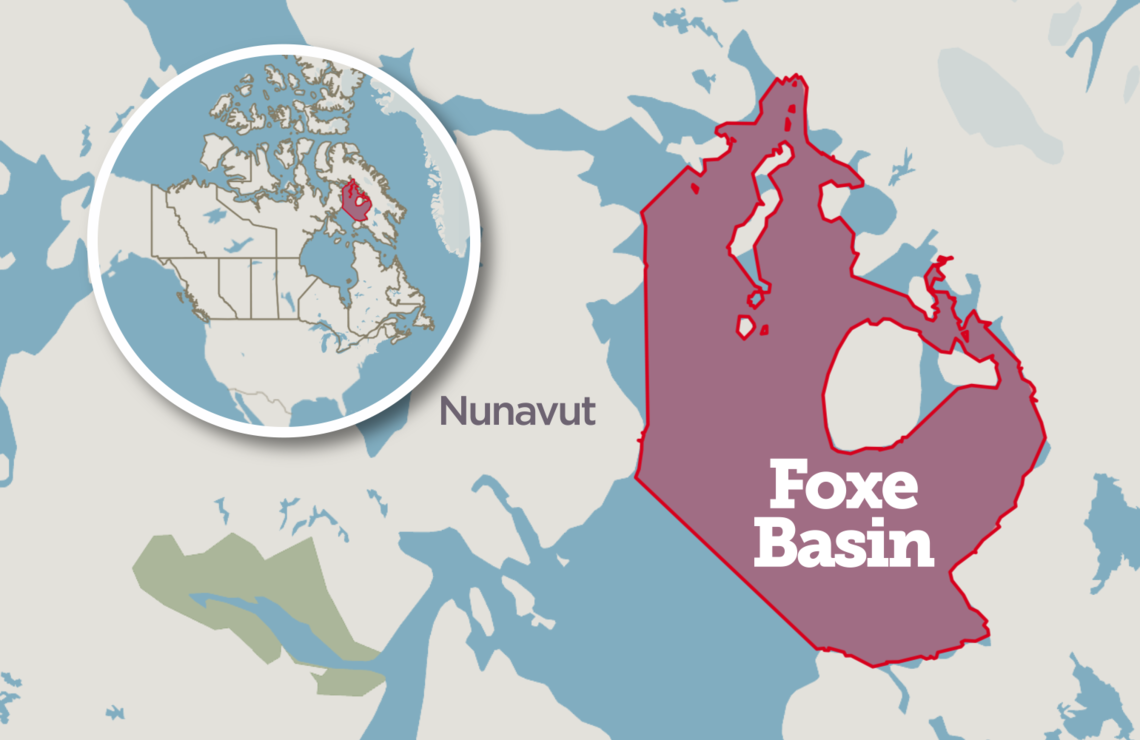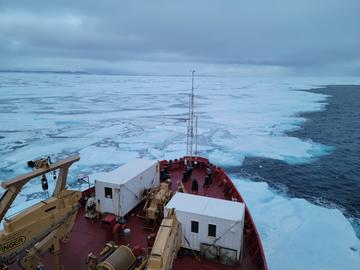Aug. 17, 2022
Arctic marine researcher measures the ocean’s contribution to combating climate change

It’s been just over a year since the Canadian Net-Zero Emissions Accountability Act became law, legislating Canada’s commitment to achieve net-zero emissions by 2050. To get to net-zero, the Canadian economy will have to either produce no greenhouse gas emissions or offset the emissions that it does produce.
Earth has built-in ways of naturally offsetting emissions, and Canada’s geography lends itself to one in particular. It’s called the “ocean carbon sink,” and Dr. Brent Else, PhD, is researching how much carbon is being offset by Canada’s 3.57 million square kilometres of Arctic Ocean.
“The ocean carbon sink describes how a large amount of CO2 that humans produce eventually ends up in the ocean,” Else explains. “The common estimate is that the ocean carbon sink offsets about 30 per cent of all CO2 emissions. If we didn't have the ocean absorbing a significant amount of CO2, then our climate change problems would be a lot worse than they currently are.”
Canada will need to quantify all of its natural carbon sinks to meet its net-zero targets.
Else, associate professor in the Department of Geography in the Faculty of Arts, has been awarded Discovery Grant and Ship Time funding by the Natural Sciences and Engineering Research Council (NSERC) to study and measure just how much carbon is being absorbed by the ocean.
Else’s project is one of 96 UCalgary research projects to receive funding through the NSERC Discovery Grant program in spring 2022.
How the ocean locks away carbon
Carbon uptake by the ocean is most effective when CO2 is absorbed by the surface water of the ocean, and then sinks as it cools into the deep sea, where the absorbed CO2 stays locked until it eventually, over hundreds of years, cycles back up to the surface.
“High latitude oceans take up quite a lot of CO2 for their surface area. Cold water is better at absorbing CO2 than warmer water, so the cold areas of the earth’s surface tend to be areas that are stronger CO2 sinks,” Else says.
Else’s research is focused on Foxe Basin, Nunavut, a large area of the Arctic Ocean north of Hudson’s Bay, and Cambridge Bay, Nunavut.

Map of Foxe Basin
There hasn't been a major oceanographic study done in Foxe Basin for about 50 years. Else is interested in the location because of its scale, and its unique combination of deep sea and shallow continental shelf terrain.
“There's this theory that shelf areas are important in the global carbon sink,” says Else.
“When CO2 gets absorbed from the atmosphere in these shelf areas, if that's accompanied by the formation of sea ice and dense sea water, then that dense water might actually be transported deep into the ocean where it's removed from any further exchange with the atmosphere. So these areas are thought to be very important carbon sinks.”
Else will spend several weeks aboard the CCGS Amundsen, Canada’s arctic research icebreaker vessel. A typical day involves gathering water samples from various locations near the ship, retrieving the samples and analyzing them in the ship lab. Else and his research team will do this daily as the ship navigates different areas of Foxe Basin.
The team is looking for dissolved gasses that will tell them just how much carbon has been absorbed by water in that area of the basin. Else is also working to determine how to best measure carbon sink in areas where ice is covering the surface of the ocean, or is melting or broken up.
Else’s five-year research program might help researchers identify areas that might be amenable to some sort of intervention in the future to increase the productivity of the carbon sink. In turn, Else’s measurements will also take into consideration the problem of a potentially over-productive carbon sink.
“It's nice that the ocean takes up CO2, but that lowers the pH of the ocean, which is this process of ocean acidification,” says Else. Ocean acidification has the potential to harm coral reefs, shelled animals (oysters, snails, etc.), and some types of plankton.
Answering the call of community collaboration
Else has also received a Northern Research Supplement from NSERC to support the training of graduate students and postdoctoral scholars, and to collaborate with local communities.
“There's been a long-standing criticism of natural science research in the Arctic that we come in, we do what we want to do, and we leave without giving much back to the community,” says Else. “It’s important that Arctic researchers meaningfully engage with communities and shape their research in such a way that it addresses community priorities.”
Else will be conducting the same assessment of seawater in Cambridge Bay as in Foxe Basin, but he’s also expanded his program to include community interests. In Cambridge Bay, Else’s team has set up small community weather stations, to assist the community in their own assessments of climate change and weather patterns. He is also working to include marine pollution research in the area, to help address the concerns of the community.
It's the time on the ship and in communities that keeps Else enthusiastic about his research. “I like the challenge that fieldwork brings with it, and working in communities is great,” he says. “That's the place where the best training happens. Collaborating with communities, that’s what we’re called to do.”











